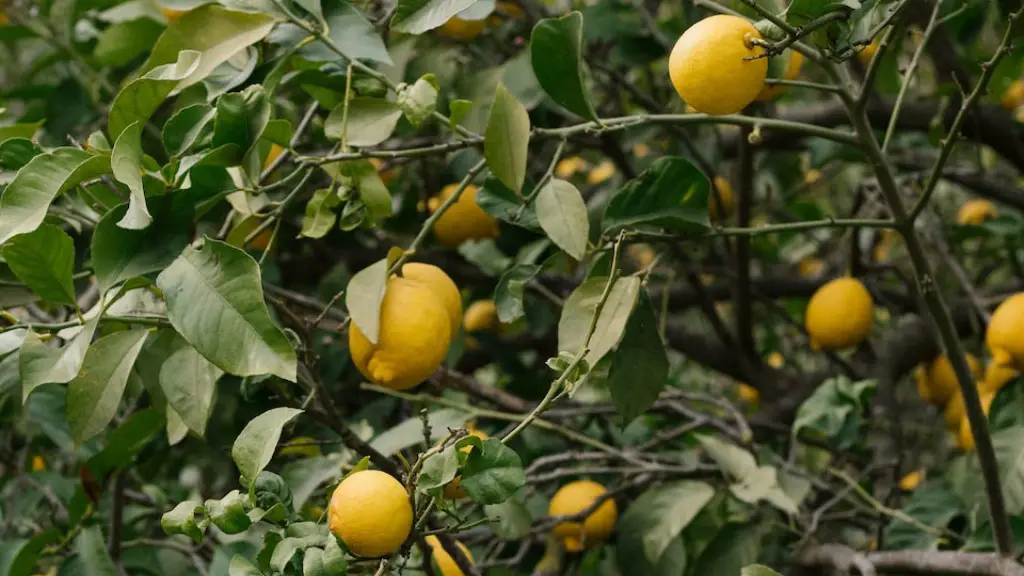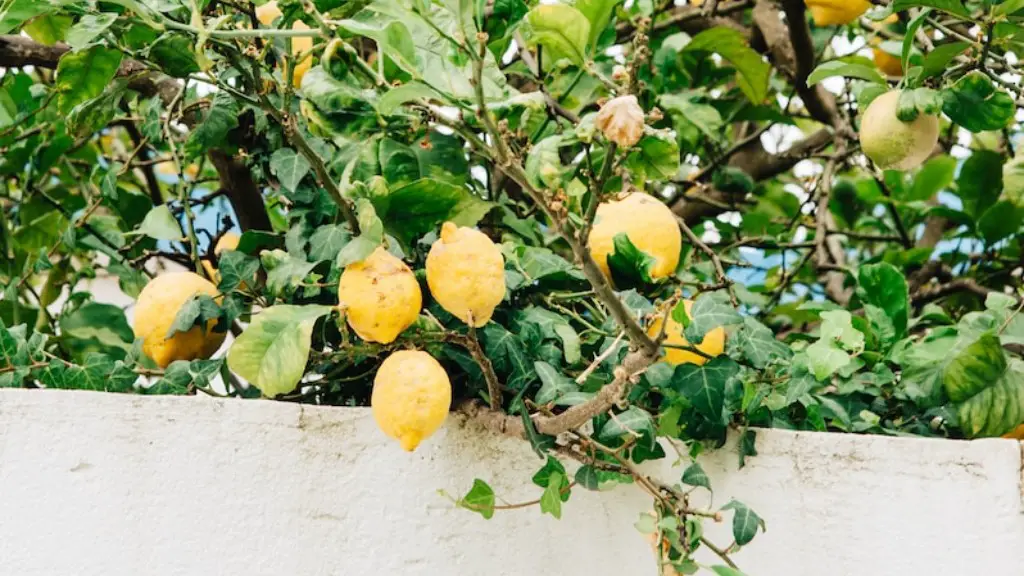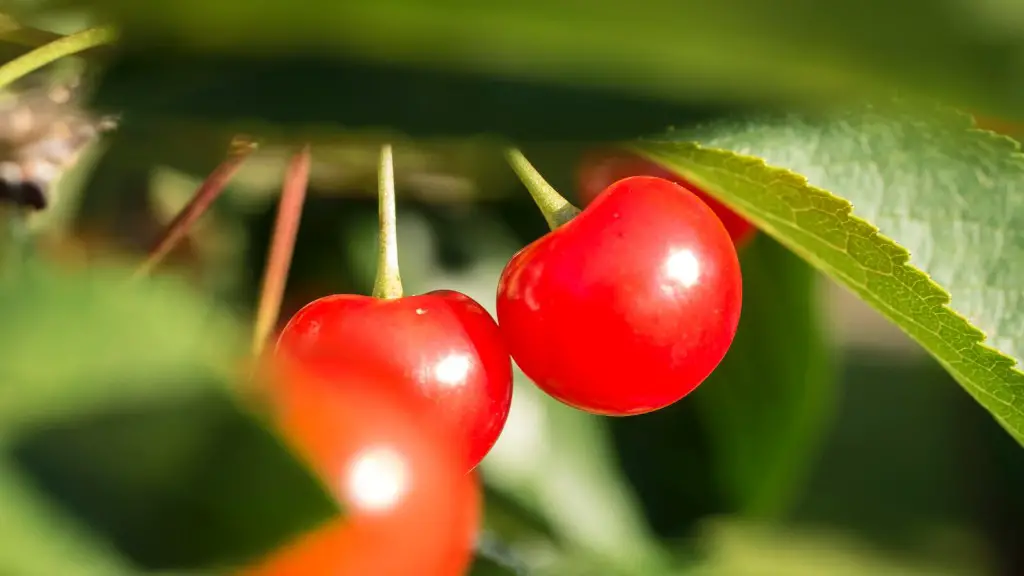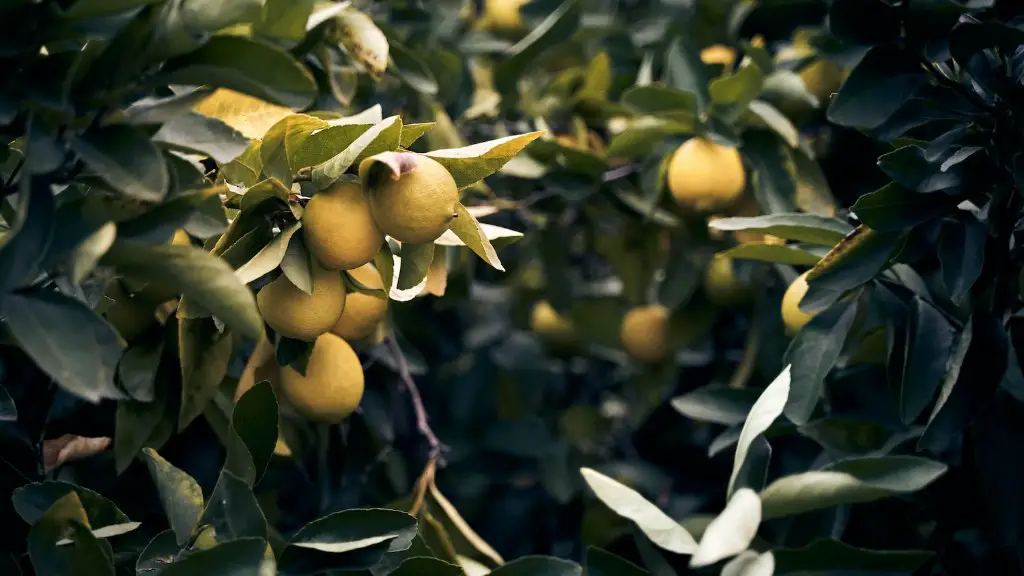Palm trees are an incredibly popular sight. From Mediterranean villas to exotic resorts, palm trees can often be seen gracefully swaying in the wind. But what type of palm tree is this? There are over 2,600 different species of palm tree, so it is important to recognize the unique features in order to identify the exact type.
Palm trees are most often recognized by their tall and slim trunks, fan-like fronds, and a crown shaft. The trunk is often seen as grey or light brown and can have a variety of textures and patterns. On some species, the trunk will have horizontal ridges and rings, while on other species vertical marks can be seen. The height, thickness and texture of the trunk can help you identify the type of palm tree.
Additionally, the leaves of palm trees come in a few shapes. The most common shapes are “feather palm” and “fan palm”. Feather palms have long and slender leaflets with pointed tips, while fan palms have leaflets that are round and fan-like in shape. Moreover, the way the leaves are arranged on the stem can also help you identify the species. They can grow in a single or multiple crown patterns or in a spiral or clustered formation.
The interweaving of the leaves and the undersides of the fronds is also important. It is these features which will best reveal the palm tree’s species. Its color, texture, and thickness will give you more clues. The texture of some species can be gritty and almost furry, while other palm trees can be incredibly smooth to the touch. Meanwhile, the color of a palm tree’s leaves can range from bright green to grey tones.
Finally, the type of fruit a palm tree produces is another characteristic you can analyze. For example, Date palms produce edible dates, while Coconut palms produce coconuts. Other palm trees can produce brown or red-colored seeds, nuts, or drupes.
Comparing Types of Palm Trees
Comparing the different types of palm trees may be a tricky task. However, knowing the physical characteristics and examining the trunk, leaves, and fruits of the tree is the best way to differentiate between species. Collecting samples or pictures of each palm tree type can make the work easier. You can then consult a palm tree guide, or if necessary, an expert, to figure out the type of palm tree.
Factors Affecting Palm Tree Growth
To ensure the best growth and health of a palm tree, the environment and the surrounding plants often need to be taken into consideration. Temperature, water, sunlight, and soil are all important factors that should be checked to make sure the tree is receiving the ideal amount of each. The amount of adequate water and nutrients a palm tree needs in order to survive differ for each species.
Palm trees appreciate good drainage, so the soil should be well aerated. Moreover, for tropical species, you should aim for the very highest, and for subtropical species, the lowest temperature, in order to prevent damage to the plant. Addition of fertilizers and a regular irrigation program can help maintain the necessary nutrients, improve fertility, and also protect the tree from pathogens.
Palm Tree Care and Maintenance
Since different palm varieties have different needs, it is important to understand the best ways to care for the specific species you are growing. Pruning and fertilization are two of the most important components of palm tree care. Pruning should be done for proper shape and growth of the tree. And keeping up with fertilization is vital for providing the necessary nutrients, as well as for harvesting healthy fruits and foliage.
Weed control is also important when caring for a palm tree. Weeds will compete with the tree for any available resources, including water and sunshine. A light blanket of mulch can protect the tree’s root system and help prevent any weeds from taking over.
Diseases and Pests Affecting Palm Trees
Palm trees often succumb to diseases and pests, which can have a damaging impact on their health and lifespan. Specifically, diseases caused by fungal, bacterial and virus organisms, as well as pests, can affect a palm tree’s growth. It is important to check the palm tree and its surroundings regularly, to look for any signs of infection or infestation and take measures to prevent any damage to the health of the tree.
Additionally, relying solely on chemical treatments may sometimes be more harm than help. Incorrect foliar sprays, insecticides, and fungicides can damage the foliage and trunk of the palm tree and make it more susceptible to disease and decay. Knowing the substances to look out for, and how best to use them, is essential for proper palm tree maintenance.
Overcoming Stress on Your Palm Trees
Stress on a palm tree can be caused by many different things, including extreme temperatures, pests and disease, inadequate drainage, etc. However, when it comes to stress caused by mother nature, the best way to reduce its effects is to provide the tree with adequate protection. You can use stakes, burlap wraps and windbreakers to help protect your trees.
This is especially important in the first few years of a palm tree’s life, because young trees may not have a strong enough root system to withstand extreme weather conditions. Additionally, stress can lead to a decrease in the nutrient uptake, so providing the tree with extra doses of fertilizer can help keep it healthy and provide it with more strength to fight off any damage.
Conclusion of Palm Trees
The sheer variety of palm trees out there can make it difficult to identify the exact type a particular tree might be. However, with some analysis of its trunk, leaves, and fruits, you can get a better idea of the species. Taking into account factors such as temperature, water, sunlight, and soil will also facilitate the process of correctly identifying the species and providing it with the adequate care.
Finally, understanding the signs of disease and pests will help you to take any measures necessary to save the tree from damage. To ensure the health of the palm tree, reliable care and maintenance practices must be implemented.




